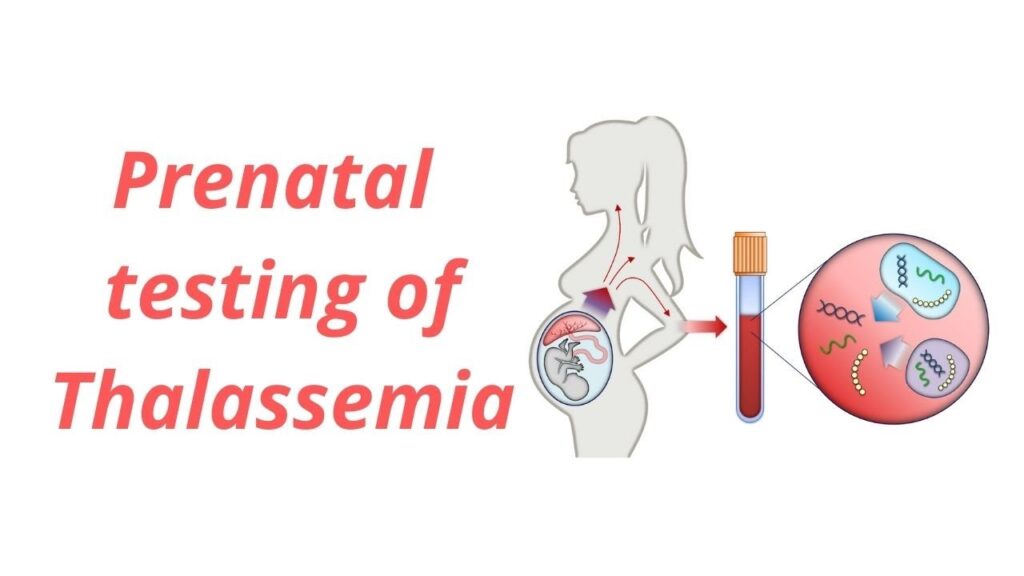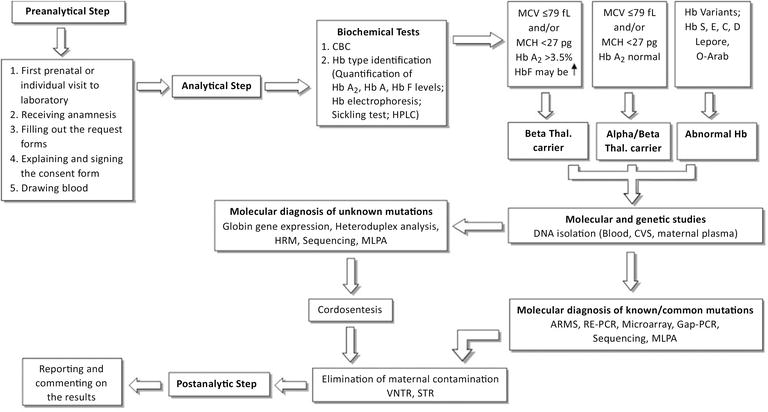Prenatal Testing for Thalassaemia
Prenatal Testing for Thalassaemia
If you have alpha or beta Thalassaemia trait and are considering having a child or are already pregnant, your partner should be tested to see if he or she has the Thalassaemia trait. If you both have Thalassaemia trait, there are several things you can do.
Inform your obstetrician about your Thalassaemia trait. Discuss what it might mean for your unborn child. If necessary, share this book with your doctor.
If you want to determine whether your unborn child has any form of Thalassaemia, there are two kinds of tests you can request.
AMNIOCENTESIS
Amniocentesis is performed in the second trimester of pregnancy, after about 15 weeks of gestation. Using ultrasound as a guide, the doctor with draws 2-3 tablespoons of amniotic fluid from the mother’s womb through a very thin needle inserted in the mother’s abdomen. Fetal cells that are floating free in the amniotic fluid are then analyzed for the Thalassaemia mutations.
CHORIONIC VILLUS SAMPLING (CVS)
CVS can be performed somewhat earlier than amniocentesis, at about 10-11 weeks of pregnancy. In this test, the doctor removes a small sample of the chorionic villi, or the cells that will form the placenta. The cells are removed either with a thin needle inserted in the mother’s abdomen or with a thin catheter inserted in the vagina. These cells, which contain the same genetic information as the fetus, are analyzed for the Thalassaemia mutations.
If you are interested in either of these tests, ask your obstetrician to refer you to a prenatal testing cancer.

There are several methods used for prenatal diagnosis:
Chorionic Villus Sampling (CVS): This procedure is usually performed between the 10th and 12th weeks of pregnancy. A small sample of cells (chorionic villi) is taken from the placenta and tested for genetic mutations that cause thalassemia.
Amniocentesis: This test is typically performed between the 15th and 20th weeks of pregnancy. A small amount of amniotic fluid, which surrounds the fetus, is withdrawn through a needle inserted into the mother’s abdomen. The cells in the fluid (amniocytes) are then tested for thalassemia mutations.
Non-Invasive Prenatal Testing (NIPT): NIPT is a newer option that can detect genetic conditions, including thalassemia, by analyzing fetal DNA that circulates in the mother’s blood. It is less invasive than CVS or amniocentesis but may not be as comprehensive in detecting all types of thalassemia mutations.

The Parents’ Association Thalassemic is the national non –profit health organization dedicated to serving patients afflicted with various forms of Thalassaemia most notably the major forms of this generic blood disease

